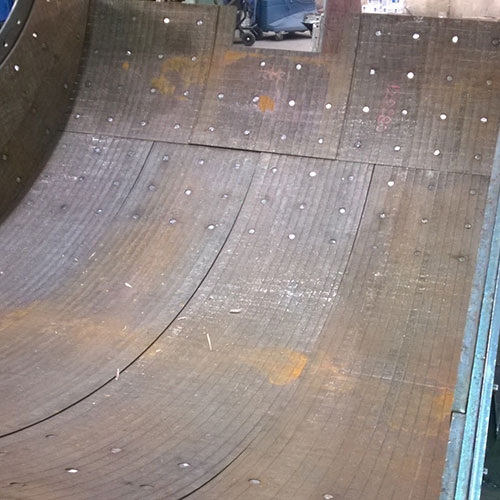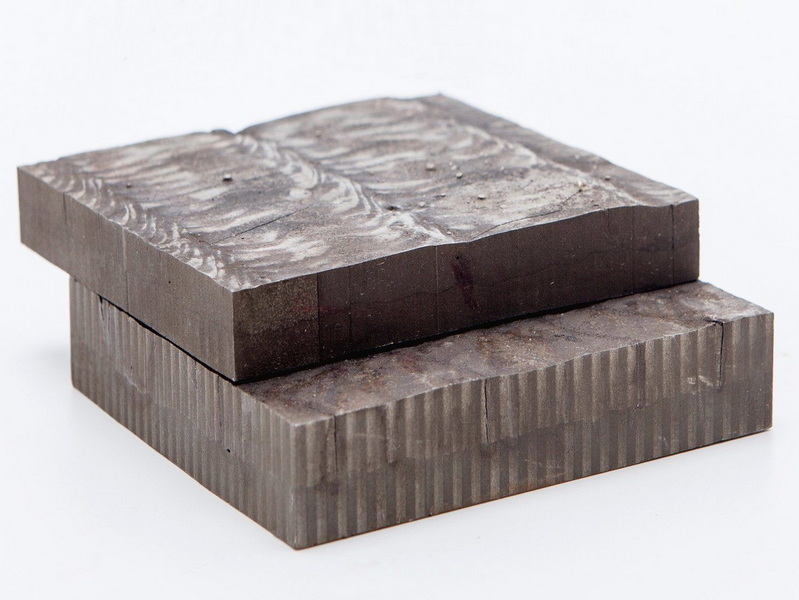Content Menu
● Introduction
● Types of Carbide Wear Plates
● Benefits of Carbide Wear Plates
>> Durability
>> Cost-Effectiveness
>> Versatility
● Applications of Carbide Wear Plates
>> Mining Industry
>> Construction
>> Manufacturing
● Installation and Maintenance
>> Best Practices for Installation
>> Maintenance Tips
● Conclusion
● Frequently Asked Questions
>> Q1. What are carbide wear plates made of?
>> Q2. How long do carbide wear plates last?
>> Q3. Can carbide wear plates be repaired?
>> Q4. Are carbide wear plates suitable for all industries?
>> Q5. How do I choose the right carbide wear plate for my application?
Introduction
Carbide wear plates are essential components in various industrial applications, designed to withstand extreme wear and tear. These plates are made from a combination of hard materials, primarily tungsten or chromium carbide, which provide exceptional durability and resistance to abrasion. In industries where equipment is subjected to harsh conditions, the use of carbide wear plates can significantly enhance performance and longevity. This article explores the key benefits of using carbide wear plates in industrial applications, highlighting their types, advantages, applications, installation, and maintenance.

Types of Carbide Wear Plates
Carbide wear plates come in several types, each tailored to meet specific industrial needs. The most common types include:
- Chromium Carbide Wear Plates: Known for their excellent wear resistance, chromium carbide plates are often used in applications involving high-impact and high-abrasion environments. They are particularly effective in mining and construction industries.
- Tungsten Carbide Wear Plates: These plates offer superior hardness and are ideal for applications that require extreme durability. Tungsten carbide wear plates are commonly used in heavy machinery and equipment that operate under severe conditions.
- Carbide Overlay Plates: These plates feature a layer of carbide material over a base metal, providing enhanced wear resistance while maintaining the structural integrity of the underlying material. They are versatile and can be used in various applications.
Each type of carbide wear plate has unique properties that make it suitable for different industrial applications. Understanding these differences is crucial for selecting the right plate for specific needs.
Benefits of Carbide Wear Plates
Durability
One of the primary benefits of carbide wear plates is their exceptional durability. These plates are engineered to resist wear and tear, making them ideal for use in environments where equipment is subjected to constant friction and impact. The hardness of carbide materials allows them to withstand abrasive forces that would quickly degrade traditional materials. This durability translates to longer service life for machinery and equipment, reducing the frequency of replacements and repairs.
Cost-Effectiveness
While the initial investment in carbide wear plates may be higher than that of conventional materials, the long-term savings are significant. The durability of carbide wear plates means that they require less frequent replacement, leading to lower maintenance costs over time. Additionally, the enhanced performance of equipment fitted with carbide wear plates can lead to increased productivity, further offsetting initial costs. Industries that prioritize cost-effectiveness will find that investing in carbide wear plates pays off in the long run.
Versatility
Carbide wear plates are incredibly versatile and can be used across various industries. Their applications range from mining and construction to manufacturing and agriculture. In the mining industry, carbide wear plates are used in equipment such as crushers, conveyors, and draglines, where they protect against the harsh conditions of material handling. In construction, these plates are utilized in heavy machinery, ensuring that equipment remains operational even in abrasive environments. The versatility of carbide wear plates makes them a valuable asset in any industrial setting.
Applications of Carbide Wear Plates
Mining Industry
In the mining industry, carbide wear plates play a crucial role in protecting equipment from the harsh conditions associated with material extraction and processing. Equipment such as crushers, screens, and conveyor systems are subjected to extreme wear due to the abrasive nature of the materials being handled. By incorporating carbide wear plates, mining companies can significantly extend the lifespan of their equipment, reduce downtime, and improve overall efficiency.
Construction
The construction industry also benefits from the use of carbide wear plates. Heavy machinery, such as excavators and bulldozers, often operates in environments where they encounter abrasive materials like gravel, sand, and concrete. Carbide wear plates provide the necessary protection to these machines, ensuring they can perform optimally without frequent repairs. This not only enhances productivity but also contributes to safer working conditions by minimizing equipment failures.
Manufacturing
In manufacturing, carbide wear plates are used in various processes, including material handling, machining, and assembly. They are particularly effective in applications where components are subjected to high levels of friction and wear. By using carbide wear plates, manufacturers can improve the efficiency of their operations, reduce maintenance costs, and enhance the quality of their products.

Installation and Maintenance
Best Practices for Installation
Proper installation of carbide wear plates is essential to maximize their effectiveness. Here are some best practices to consider:
- Surface Preparation: Ensure that the surface where the wear plate will be installed is clean and free of contaminants. This helps achieve a strong bond between the plate and the substrate.
- Alignment: Carefully align the wear plate during installation to ensure even contact with the surface. Misalignment can lead to uneven wear and reduced effectiveness.
- Secure Fastening: Use appropriate fasteners to secure the wear plate in place. Ensure that the fasteners are tightened to the manufacturer's specifications to prevent loosening during operation.
Maintenance Tips
To extend the lifespan of carbide wear plates, regular maintenance is crucial. Here are some tips:
- Routine Inspections: Conduct regular inspections to identify any signs of wear or damage. Early detection can prevent more significant issues down the line.
- Cleaning: Keep the wear plates clean to prevent the buildup of debris that can cause additional wear. Use appropriate cleaning methods that do not damage the carbide surface.
- Monitoring Performance: Monitor the performance of equipment fitted with carbide wear plates. If there are noticeable declines in efficiency, it may indicate that the wear plates need replacement.
Conclusion
Carbide wear plates are invaluable components in various industrial applications, offering exceptional durability, cost-effectiveness, and versatility. Their ability to withstand extreme wear and tear makes them ideal for use in industries such as mining, construction, and manufacturing. By investing in carbide wear plates, companies can enhance the performance of their equipment, reduce maintenance costs, and improve overall productivity. As industries continue to evolve, the demand for durable and efficient materials like carbide wear plates will only increase.

Frequently Asked Questions
Q1. What are carbide wear plates made of?
Carbide wear plates are typically made from a combination of hard materials, primarily tungsten carbide or chromium carbide, which are bonded to a base metal. This combination provides exceptional hardness and wear resistance.
Q2. How long do carbide wear plates last?
The lifespan of carbide wear plates can vary depending on the application and operating conditions. However, they are designed to last significantly longer than traditional materials, often providing years of service before needing replacement.
Q3. Can carbide wear plates be repaired?
In some cases, carbide wear plates can be repaired through hardfacing techniques, where additional carbide material is applied to worn areas. However, the feasibility of repair depends on the extent of the wear and the specific application.
Q4. Are carbide wear plates suitable for all industries?
Yes, carbide wear plates are versatile and can be used across various industries, including mining, construction, manufacturing, and agriculture. Their ability to withstand harsh conditions makes them suitable for many applications.
Q5. How do I choose the right carbide wear plate for my application?
Choosing the right carbide wear plate involves considering factors such as the type of material being handled, the level of abrasion and impact, and the specific requirements of your equipment. Consulting with a supplier or manufacturer can help ensure you select the most appropriate plate for your needs.
















